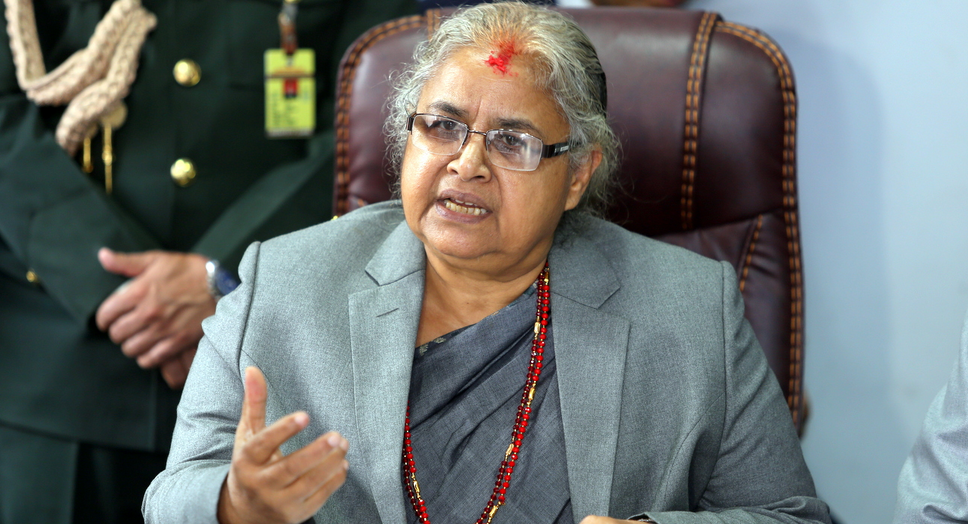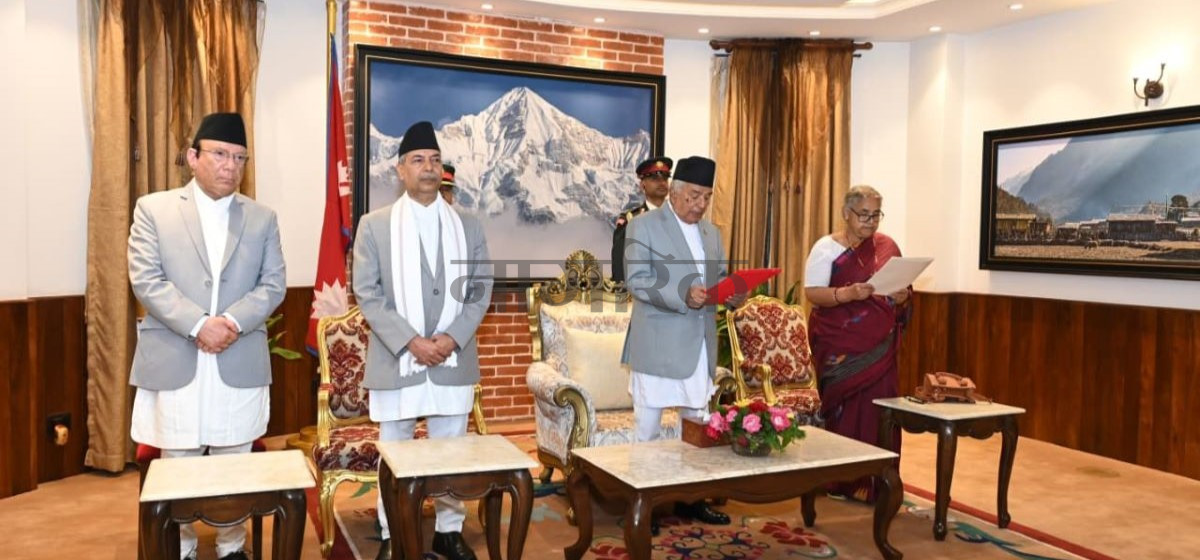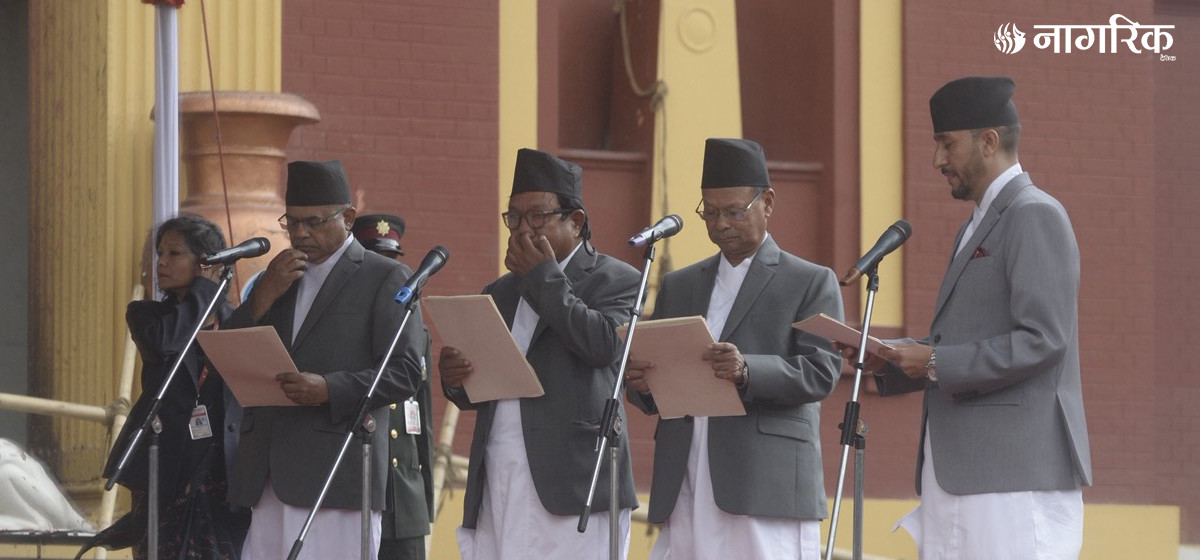Nepal's contemporary political landscape remains characterized by profound instability as the nation struggles to reconcile democratic consolidation with sustainable socio-economic development objectives. The decade-long Maoist insurgency (1996-2006) inflicted severe human, economic, and institutional costs while failing to deliver its promised socioeconomic transformation. Rather than being a catalyzing progress, the conflict embedded systemic fragility, eroding rule of law, weakening state institutions, and diminishing public trust through repeated failures of political leaderships. Subsequent administrations, whether nominally democratic or communist fractions, have consistently prioritized political survival over effective governance, creating a perpetual cycle of short-term maneuvering that undermines long-term stability. The political arena has degenerated into a revolving door of political leaderships, with figures ascending to power through opportunistic alliances rather than principled governance and policies. This transactional governance model, marked by fluid ideological commitments and systemic resource and rule of law exploitation, has deep rooted partisan interests while stalling meaningful socioeconomic progress. The resultant political culture rewards power accumulation over public wellbeing, leaving Nepal's democratic and developmental aspirations persistently unfulfilled.
The Constitution of Nepal (2015) established a theoretically sophisticated federal foundation with a three-tier governments structure and clearly delineated competencies among federal polity. While this constitutional architecture aligns with established federal principles and values, implementation has revealed critical deficiencies. Contemporary analysis suggests Nepal's federal implementation suffers from weak mechanisms and pitiable political commitment, rendering its progressive provisions largely inoperative or ineffective in practice. Federal systems fundamentally require constitutional frameworks that distribute power equitably, establish dispute resolution mechanisms, and enable institutional adaptation to evolving sociopolitical demands and curb corruption. Nepal's federal structure, while incorporating these elements theoretically, has failed to translate constitutional provisions into efficacy of functional governance. Instead of fostering equitable development or political stability, the system has succumbed to elite capture, where partisan interests systematically override constitutional mandates.
This institutional dysfunction has exacerbated broader economic stagnation, reflected in Nepal's concerning macroeconomic indicators. According to the Economy Survey of 2081/2082 by the Ministry of Finance, the economy demonstrates excessive reliance on remittances (25.82% of GDP, NRs. 1051.66 billion) alongside escalating public debt (40% of GDP, NRs 2676 billion). The trade imbalance remains particularly stark, with imports constituting 91.6% of total trade during the first ten months of FY 2081/82, while approximately 318,000 workers emigrate annually seeking employment, over 250,000 Nepali youth do annual renewal of labor permits, a troubling indicator of declining domestic productivity and production. The growing disparity between constitutional intent and governance outcomes reveals Nepal's federalism operates as a nominal rather than functional system. Federal polity lacks meaningful fiscal or administrative autonomy, with the central government retaining disproportionate control (64.2% of expenditures versus 9.9% provincial and 25.9% local shares). This centralization manifests most acutely in revenue collection, where the federal government commands 92% of total revenues, leaving merely 8% for federal polity. Such asymmetrical power distribution mirrors failed federal implementation over a decade in other developing contexts where decentralization remained superficial.
Revised interest rate corridor system introduced

Capital expenditure trends further illustrate systemic inefficiency, fluctuating erratically from 3.7% of GDP in 2071/72 to 11.4% in 2077/78 before regressing to 7.8% in 2080/81, demonstrating poor fiscal discipline and misaligned priorities. The theoretical advantage of federal systems lies in federal polity’s superior understanding of local conditions, preferences and challenges, enabling more responsive policy design and execution than centralized alternatives that typically impose uniform, inflexible solutions. However, Nepal's fiscal architecture, particularly its system of conditional, special, equalization and matching grants controlled by the federal government, fails to address local priorities, challenges, principles leaving critical sectors like urban waste management, healthcare, local economic stimulation, nutrition,education, environment, disaster management and infrastructure, etc. chronically underfunded.
The FY 2082/83 fiscal policy articulates governance principles and anti-corruption priorities but crucially neglects the institutional strengthening required for their realization. Effective reform necessitates equipping federal polity with robust legal frameworks, administrative capacity, and enforcement mechanisms to combat corruption and power misuse. The current approach relies excessively on financial allocations without corresponding utmost reforms, ignoring that federal efficiency depends on institutional and legal capacity rather than mere resource availability. Without advanced federal polity, even well-designed budgets will continue failing at implementation.
Comparative federal scholarship offers invaluable insights into potential reform trajectories for Nepal’s governance system, yet the fiscal priorities outlined in the 2082/83 budget reveal significant gaps in addressing these imperatives. The budget fails to offer programs to facilitate the necessary transition of provincial and local governments from politicized entities to technocratic institutions capable of effective oversight, implementation, coordination, and local capacity development, etc. While current donor supported initiatives aim to strengthen subnational governance, their structural limitations and unclear federal policy alignment render them insufficient as standalone solutions. The Government of Nepal must recognize that relying on such donor programs without addressing their fundamental weaknesses will perpetuate systemic inefficiencies rather than advance meaningful federalism.
A functional federal system requires clear delineation of roles across governance polity: local governments should focus on service delivery, provinces must evolve into supervisory bodies ensuring implementation quality and providing technical support to local units, while the federal government maintains responsibility for macroeconomic strategy and national priorities. However, achieving this balance demands far-reaching civil service reforms that transcend superficial adjustments. Meritocratic recruitment processes, performance-based incentive structures, and robust mechanisms to insulate bureaucratic functions from political interference are essential to dismantle political groups' entrenched patronage networks that currently undermine institutional effectiveness. Without these foundational changes, Nepal’s federal system will continue to struggle with the disconnect between constitutional aspirations and governance realities, where federal polity remains administratively weak and financially dependent despite their formal autonomy.
The persistent overcentralization of fiscal and administrative authority reflects a broader failure to internalize lessons from successful federal models. While the 2082/83 budget articulates broad governance improvement goals, its failure to specifically advance provincial and local institutions suggests a continuation of top-down approaches that have historically stifled federal polity capacity. Until Nepal prioritizes genuine devolution of authority alongside professionalization of its civil service, its federal system risks remaining an institutional façade formally decentralized but operationally centralized, with subnational governments perpetually constrained by structural limitations rather than efficient as engines of localized development.
Nepal's federalism stands at a critical juncture. Continued politicization threatens to institutionalize predatory decentralization, a system where power appears diffused but actually remains concentrated, breeding stagnation and eroding public trust with deepening of deficit and debt. The window for meaningful reform narrows as vested interests consolidate control, making structural overhaul both increasingly urgent and challenging. Future design must empirically quantify unimplemented constitutional provisions and examine subnational case studies to better understand the divergence between federal theory and practice. Without decisive action to depoliticize institutions and clarify governance roles, Nepal risks perpetuating a system of centralized authority masquerading as federalism, with potentially irreversible consequences for both democratic governance and economic development.

























